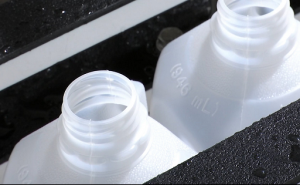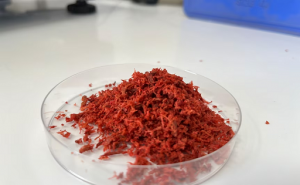
Dairy production is likely to grow in places with sufficient land and water, and regulations that aren’t too burdensome.
“I hear Pennsylvania’s a little bit like that,” said Betty Berning, a Minnesota-based dairy consultant and economist.
Berning spoke Wednesday at the Dairy Financial and Risk Management Conference presented by the Center for Dairy Excellence.
Pennsylvania has an opportunity to grow in part because the Western states probably don’t. The straitened water supply may dissuade dairy processors from expanding in that region and could make purchased feed too expensive for California farmers to consider adding cows.
Berning has higher hopes for the Midwest, where rapid expansion in Michigan and South Dakota is already showing that those states offer the conditions for success.
Pennsylvania has the water and land base to join the party, but the state isn’t a lock to attract dairy investment.
It’s more mountainous and populous than any Midwestern state, and has high land costs in some places. Pennsylvania is also heavy on processing for fluid milk at a time when other dairy products are driving the industry’s growth.
The state’s milk production has declined 6% since 2010, even as Michigan has grown 44%, USDA statistics show. Pennsylvania slid from fifth to eighth place during that time.
To attract new dairy investment in Pennsylvania, the state will need to implement the right policies, Berning said. Wisconsin has made a concerted effort for the last 20 years to at least maintain its dairy industry, and that state remains a top dairy producer with the most dairy farms in the U.S.
Pennsylvania has been working to get dairy-friendly policies in place.
In 2020, the latest of several state dairy studies provided more than 50 recommendations to bolster the industry, and 10 of those goals have been achieved, Ag Secretary Russell Redding said.
The state has courted new processing plants, including a baby formula plant that opened earlier this year in Reading.
In 2019, the state created Farm Vitality Grants that help families plan their futures. And a recent $500 million upgrade to the Port of Philadelphia attracted a company that will ship directly to China, avoiding the transshipment that was previously required.
“I like our chances,” Redding said. “I like what we’re doing. I like what we see. I see a future that has agriculture in it.”
Berning offered another encouragement — dairy farmers can almost always be profitable, as long as they use risk management.
The federal Dairy Margin Coverage program is the starting point — it’s free at the base coverage level for small dairies — but farms can also pursue value-added processing, diversification, good transition planning, and lobbying for farm-friendly policies, she said.
Only a third of Pennsylvania dairies are enrolled in Dairy Margin Coverage, said Zach Myers, risk education manager at the Center for Dairy Excellence. Religious objections from the state’s Plain Sect farmers may contribute to the low participation rate in the federal program.
Export Growth
If Pennsylvania has an opportunity to build its stature within the U.S., the nation is also in a decent position to grow its stature on the export market. The U.S. set a dairy export record and is on pace to do so again this year, Berning said.
European competitors are weighing environmental rules that could limit their dairy expansion.
The Netherlands — where low-lying land and high livestock density raise water quality concerns — has proposed nitrogen regulations that could lead to many farmers exiting the industry.
Dutch farmers have protested the potential threat to their livelihoods, though it’s possible some of the drawdown could be achieved through attrition, buyouts or transfer of calf operations to a neighboring country, Berning said.
New Zealand, another major dairy exporter, is approaching maximum cow capacity for its Colorado-sized land base. Kiwis value dairy because it accounts for 3 to 5% of national GDP, but they have a potentially conflicting desire to keep the island nation environmentally pristine, Berning said.
China has set aggressive goals for increasing consumption of dairy, which is seen as key to combating child malnutrition.
The country is building massive dairies to meet the growing demand, but it doesn’t have the land base to grow enough crops, especially with some of the farms sitting near the expanding Gobi Desert.
“They’re going to run into water issues,” Berning said.
Dairy growth could also occur in places with population growth, which has cooled in much of the world. South America and Africa are the big exceptions.
Africa lacks the infrastructure and political stability to become a hotbed of dairy production, but over time, South America could build its stature in the industry, Berning said.























